Ancoats and New Cross
Click on the map below to go to the interactive version:
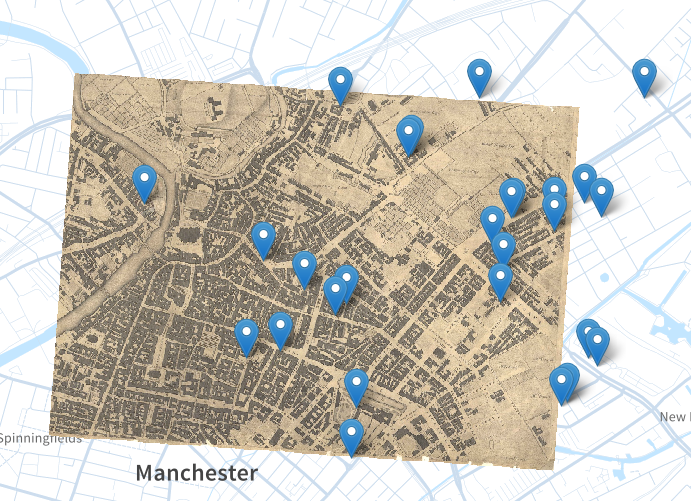
Map of locations of United English delegates and meeting sites, 1798-1801.
The United English republican cells had a strong presence in the Irish areas of Ancoats and New Cross, meeting in pubs and houses in the district.
Tib Street
Tib Street was a lively political centre which often had connected activity with George Leigh Street, situated a few hundred yards away across Great Ancoats Street. In 1812, radicals met at the Elephant Inn on Tib Street and after they adjourned their meeting to the Prince Regent’s Arms, they were arrested after the authorities stormed into the pub, producing the well-publicised case of the ‘Thirty Eight’.[1] In March 1817, preceding the March of the Blanketeers, Lomax the spy claimed to have attended private meetings of radicals in the Elephant inn and the Death of Nelson on Newton Lane round the corner.[2] The Elephant hosted a meeting of striking silk weavers in May 1829. It appears to have become the Sherwood Arms, which hosted the mass trades’ congress over three days in August 1842 that organised the ‘plug strikes’.[3] The Albion Mills tavern on Tib Street was where the Working-Class Political Union held a reform meeting in September 1831, with further meetings in 1834, and hosting a visit by Feargus O’Connor to form a Radical association in December 1835.[4] It is unclear whether or not this was the same pub as the Elephant or the Sherwood. The Chartists also hired an association room on Tib Street, although it is unclear whether it was in the Sherwood.[5] The authorities imposed their own spatial control with the erection of a temporary barracks and then the test and workhouse on Tib Street, which was the focus of an anti-poor law riot in 1848.
[1] A. Prentice, Historical Sketches and Personal Recollections of Manchester (London, 1851), p.77.
[2] TNA, HO 40/5/4A/137, deposition of Lomax, March 1817.
[3] Morning Chronicle, 18 May 1829; Manchester Guardian, 17 August 1842.
[4] Manchester Times, 1 October 1831, 11 October 1834, 19 December 1835.
[5] Northern Star, 19 September 1840.
Signatures to petition to the Home Office for the release of Abel Heywood, 1841
View Abel Heywood signatories in a full screen map
The locale did not solely host working-class and Irish radical activity and residences. It was a mix of geographies of political and personal connections. Lower middle class and trading radicals also had a presence in the area.
In 1840, the radical publisher and bookseller, Abel Heywood, of 60 Oldham Street, was arrested for publishing an atheist pamphlet deemed to be blasphemous. He had already been fined 48 pounds for selling unstamped publications in 1832.[1] A petition was sent to the Home Office calling for his prosecution for blasphemy to be halted. There are 83 hand-signed signatures to the petition.[2] Heading the list were the most respectable people, the magistrate T. J. S Walker of Longford and the manufacturer Thomas Woolley of Bridgewater Place. The rest were predominantly shopkeepers, grocers, tailors and skilled artisans. Mapping the order of the signatures thus indicates a feature of petition collecting not overtly obvious: that the names must have been taken by going from shop to shop during work hours, and thus confined to the more respectable by purpose and design.
[1] Poor Man’s Guardian, 17 March 1832.
[2] TNA, HO
Here is Abel Heywood’s entry in the 1841 census return for Oldham Street, Manchester:
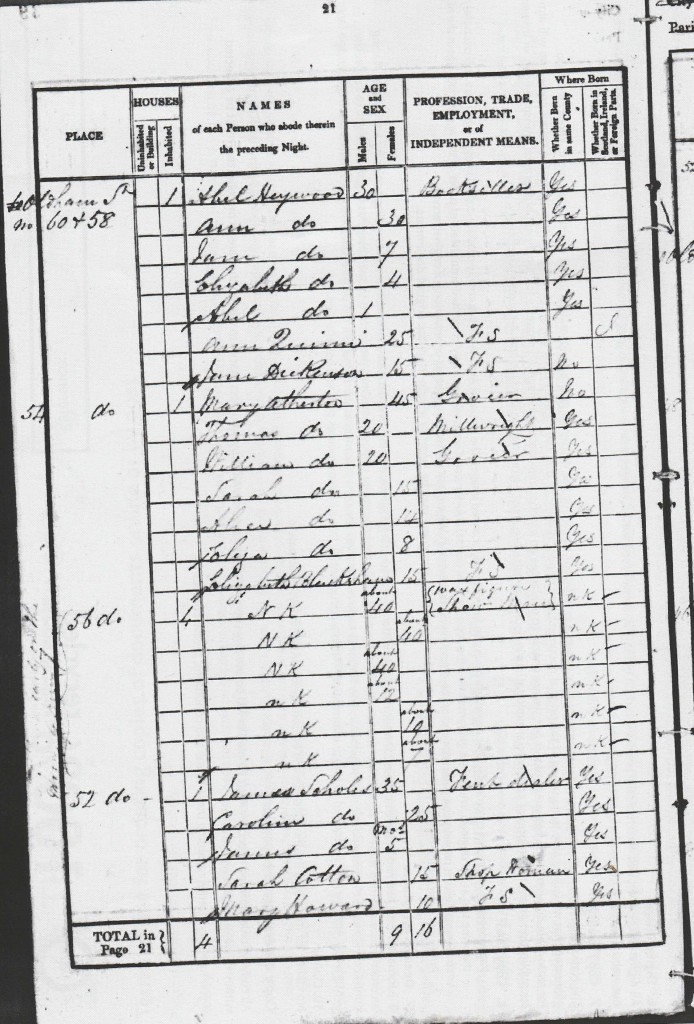
And my favourite, two doors down from Heywood, was a family of ‘wax figures, show room’, complete with approximate ages, but names and ‘place of birth’ unknown:
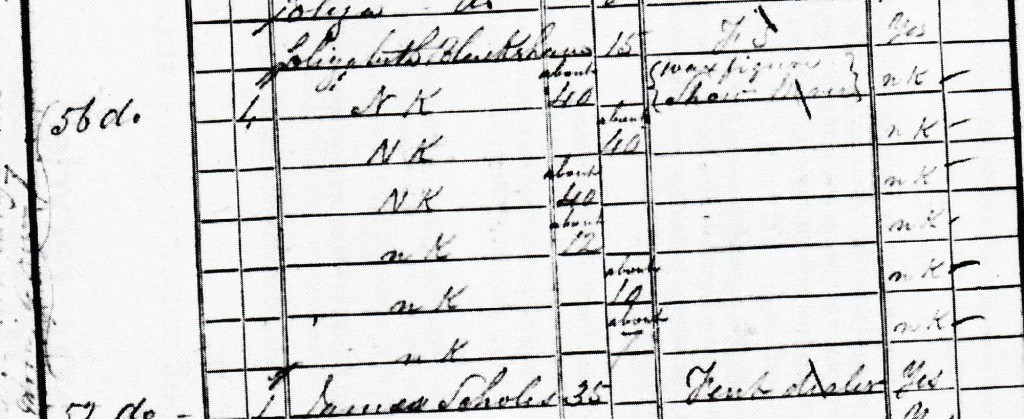
And here’s the google street view of numbers 58 to 60 Oldham Street (presumably rebuilt?) and number 56.
Every Street
Update: I have done a blog post about Every Street: http://historytoday-navickas.blogspot.co.uk/2017/03/field-notes-from-east-west-walk-of.html
Read about the history of Dr James Schofield’s Roundhouse chapel, Every Street, Manchester: http://manchesterhistory.net/manchester/churches/roundhouse.html
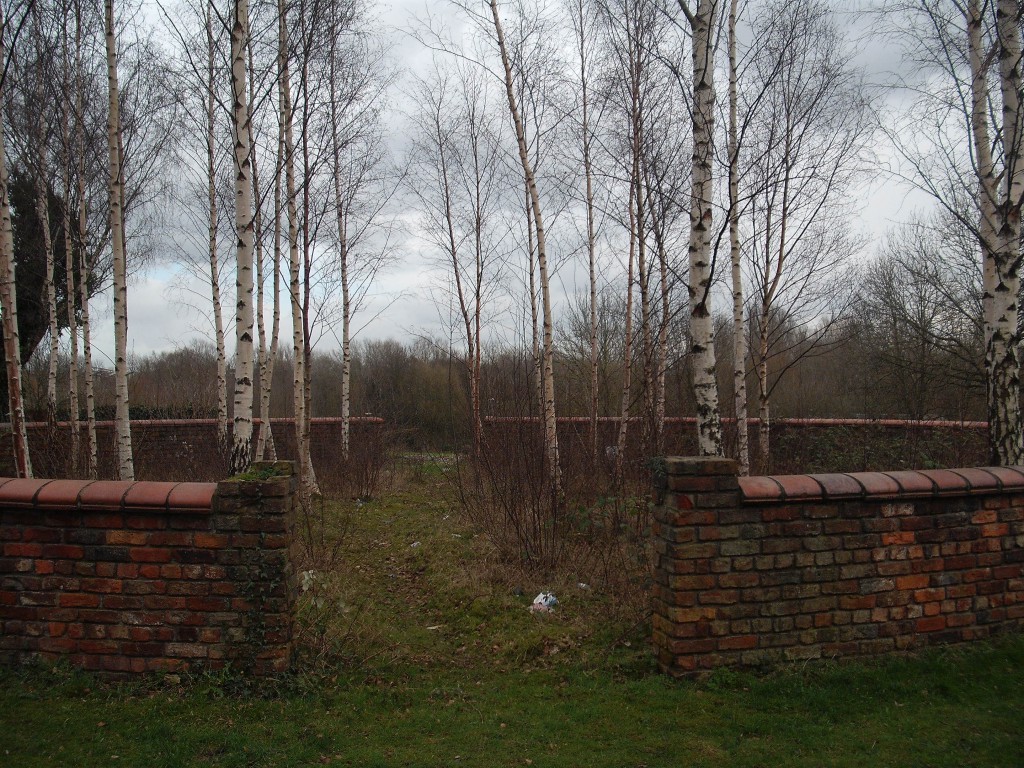
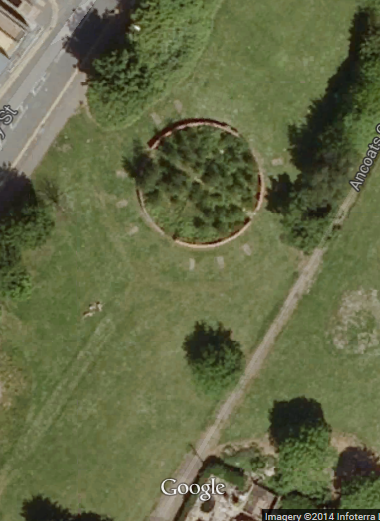
Courts
Falkner’s Court, off Back Ancoats Street, cholera map, 1833, Origins & Progress of the Malignant Cholera, by Henry Gaulter
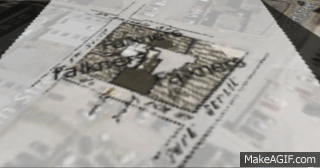
1794 Green’s map of north Manchester and Collyhurst:

Protest and the Politics of Space and Place Extended by Katrina Navickas is licensed under a Creative Commons Attribution-NonCommercial-ShareAlike 4.0 International License.
